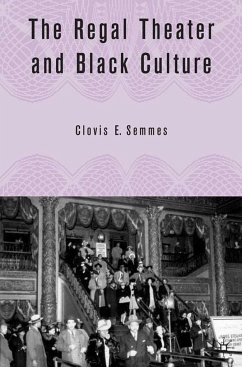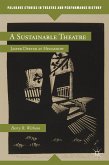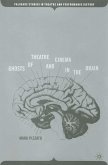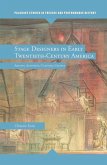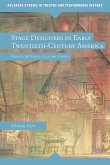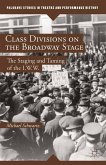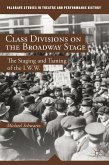Chronicling over forty years of changes in African-American popular culture, the Regal Theatre (1928-1968) was the largest movie-stage-show venue ever constructed for a Black community. Semmes reveals the political, economic and business realities of cultural production and the institutional inequalities that circumscribed Black life.
"This magnificent volume should be indispensable reading for students of African- American and American culture. It provides searching scholarship from which sophisticated students, no less than beginners in the field, are likely to learn much. One cannot help but note that the cultural offerings of Chicago were brilliantly in evidence during the time the national spotlight was for so long focused on New York's Harlem. A landmark achievement." - Sterling Stuckey, Distinguished Professor Emeritus of History, University of California at Riverside
"In this exhaustively researched, skillfully crafted, study, Clovis E. Semmes has
vividly recreated the forty year life span (1928-1968) of black Chicago's cultural
cornerstone, the Regal Theater. Although the physical Regal Theater is gone
(having met the wrecking ball more than a generation ago), The Regal Theater
and Black Culture admirably insures that this African American urban landmark
will not be forgotten." - Robert E. Weems, Jr., author of Black Business in the Black Metropolis: The Chicago Metropolitan Assurance Company, 1925-1985
"Semmes provides a fascinating study of one of America's most important theater institutions. By providing such a rich history of the Regal Theater, Semmes is also able to make broader claims about the negotiation of race in the 20th century. This book is vital reading for anyone interested in American performance history and African American popular culture. A major contribution!" - Nadine George-Graves, Associate Professor, UCSD, Department of Theater and Dance
"Clovis E. Semmes' The Regal Theater and Black Culture is an insightful look into the social history and community function of one of the most important and unique cultural venues in black America, Chicago's Regal Theater. Located in the heart of Chicago's now revitalizing Bronzeville (South Side) district, it was the only theater/entertainment palace ever constructed specifically for blacks by whites in an all-black community. While physically imposing, its ideological role reached equal heights of significance. This study opens the door to a comprehensive understanding of the past state of black entertainment as well as the deep-rooted popular appreciation and affirmation of black culture." - Christopher R. Reed, Department of History, Roosevelt University, and author of Black Chicago's First Century, Volume One, 1833-1900; 'All the World Is Here': The Black Presence at White City; and The Chicago NAACP And the Rise of Black Professional Leadership, 1910-1966
"Clovis E. Semmes's The Regal Theater and Black Culture reflects the elegance of Black cultural productions with an easy-to-read, clear, alluring writing style that chronicles the richness of Chicago's Regal Theater. While New York's Apollo Theater has enjoyed national and international popularity, Semmes's work emerges as an essential contribution, demonstrating that NewYork and its Apollo were not the first modernist representations of the multifaceted nature of Black talent and entertainment. Providing a Black-centered, insider microscopic picture of the interrelationship between Chicago as a 'Black Metropolis' and the cultural productions of the Regal Theater, this book emerges as an invaluable resource for students and seasoned scholars of Black literary, anthropological, political, sociological, architectural, legal, economical, historical epistemology as well as musical and dance productions. Reading this book is a journey through Bronzeville, the center of southside Black Chicago, and the location of the Regal Theater, between 1928 and 1968." - Joyce A. Joyce, Professor of English, Temple University
"In this exhaustively researched, skillfully crafted, study, Clovis E. Semmes has
vividly recreated the forty year life span (1928-1968) of black Chicago's cultural
cornerstone, the Regal Theater. Although the physical Regal Theater is gone
(having met the wrecking ball more than a generation ago), The Regal Theater
and Black Culture admirably insures that this African American urban landmark
will not be forgotten." - Robert E. Weems, Jr., author of Black Business in the Black Metropolis: The Chicago Metropolitan Assurance Company, 1925-1985
"Semmes provides a fascinating study of one of America's most important theater institutions. By providing such a rich history of the Regal Theater, Semmes is also able to make broader claims about the negotiation of race in the 20th century. This book is vital reading for anyone interested in American performance history and African American popular culture. A major contribution!" - Nadine George-Graves, Associate Professor, UCSD, Department of Theater and Dance
"Clovis E. Semmes' The Regal Theater and Black Culture is an insightful look into the social history and community function of one of the most important and unique cultural venues in black America, Chicago's Regal Theater. Located in the heart of Chicago's now revitalizing Bronzeville (South Side) district, it was the only theater/entertainment palace ever constructed specifically for blacks by whites in an all-black community. While physically imposing, its ideological role reached equal heights of significance. This study opens the door to a comprehensive understanding of the past state of black entertainment as well as the deep-rooted popular appreciation and affirmation of black culture." - Christopher R. Reed, Department of History, Roosevelt University, and author of Black Chicago's First Century, Volume One, 1833-1900; 'All the World Is Here': The Black Presence at White City; and The Chicago NAACP And the Rise of Black Professional Leadership, 1910-1966
"Clovis E. Semmes's The Regal Theater and Black Culture reflects the elegance of Black cultural productions with an easy-to-read, clear, alluring writing style that chronicles the richness of Chicago's Regal Theater. While New York's Apollo Theater has enjoyed national and international popularity, Semmes's work emerges as an essential contribution, demonstrating that NewYork and its Apollo were not the first modernist representations of the multifaceted nature of Black talent and entertainment. Providing a Black-centered, insider microscopic picture of the interrelationship between Chicago as a 'Black Metropolis' and the cultural productions of the Regal Theater, this book emerges as an invaluable resource for students and seasoned scholars of Black literary, anthropological, political, sociological, architectural, legal, economical, historical epistemology as well as musical and dance productions. Reading this book is a journey through Bronzeville, the center of southside Black Chicago, and the location of the Regal Theater, between 1928 and 1968." - Joyce A. Joyce, Professor of English, Temple University

